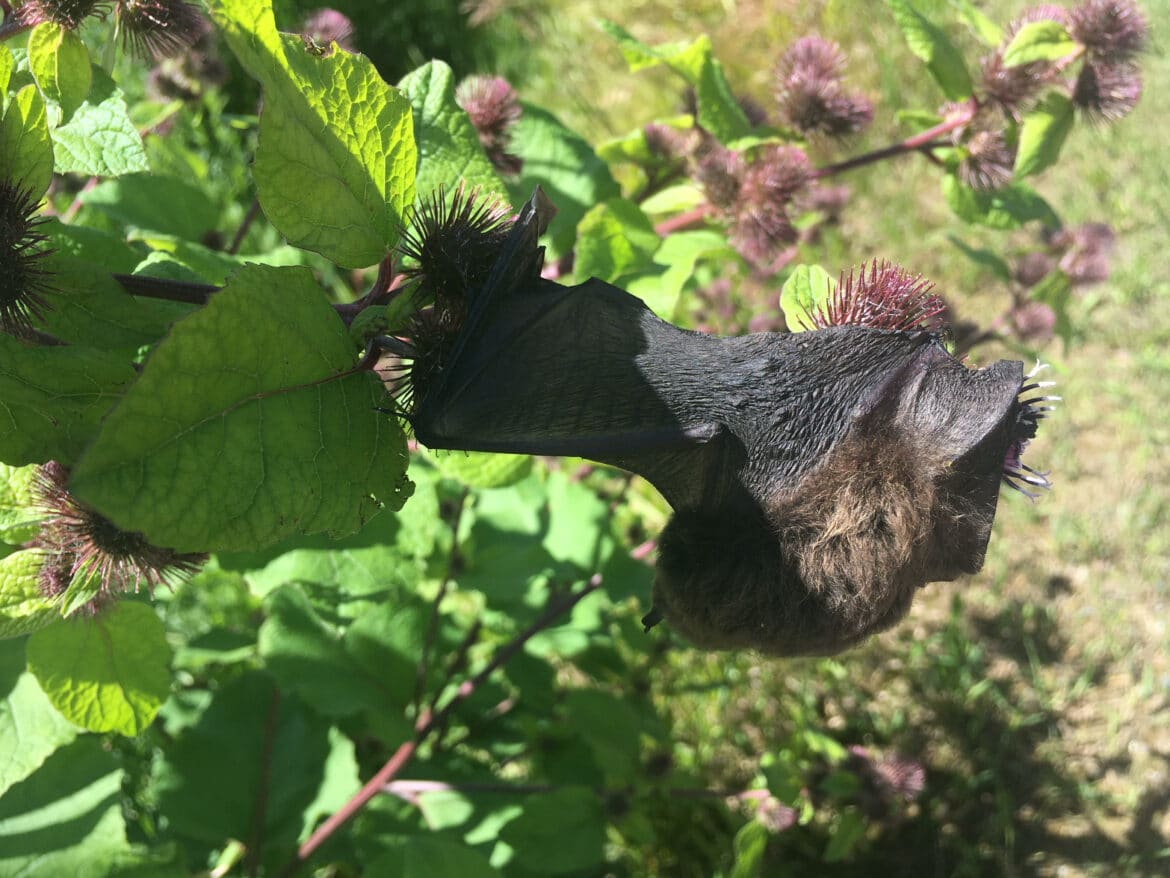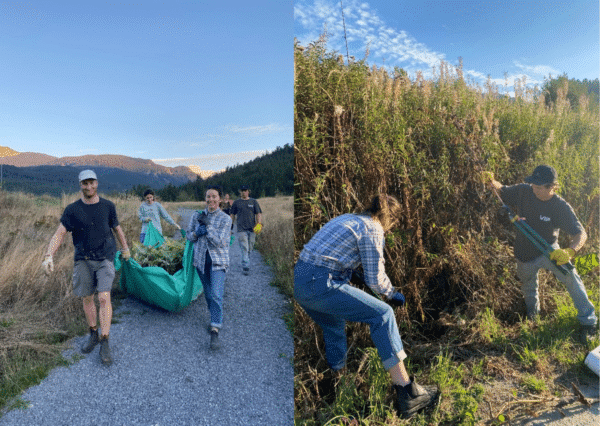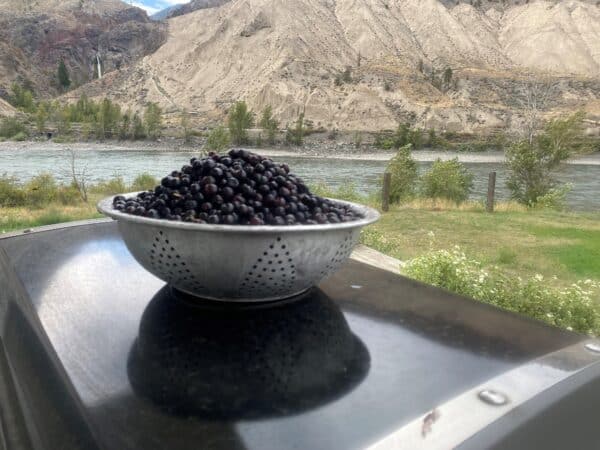Content warning: Photos may be distressing to some.
By Lisa Houle | October 28, 2022
Grab a shovel and do a favour for the bats who kept the mosquito population down this summer. Invasive burdock (Arctium spp) has got to go.
Mandy Kellner, Bat Conservation Coordinator with the Ministry of Land, Water and Resource Stewardship, is a wildlife biologist with an MSc studying bats in forests. She recently reached out to ISCBC to share photos of bats entrapped in burdock to help raise awareness of the impact of this invasive plant. The photos were collected from online reports sent in by concerned citizens around the province.
“The bat community has been aware of the potential for bats to be snagged on burdock for many years. We always get intermittent reports and photos, but numerous reports have come in this year already,” said Mandy. “Of course, these incidents are just the ones that people see and report – we don’t really know the full scope of this problem.”

Burdock is considered a noxious weed in many regions of the province, commonly found near fence lines, roadsides, and streambanks. It’s also found in grazing lands, impacting wildlife, grazers and threatened species. Burdock spreads very easily – one plant can produce up to 16,000 seeds!
“Bats, birds, basically any small animal can get stuck in burdock, notorious for its rounded flower heads with hooked spines (burrs). These burrs are so sticky they were the inspiration behind Velcro,” said Allison McCabe, Senior Lead, Outreach at ISCBC.

Mandy advocates for helping the bat population, as bats do so much to help us. “Bats are awesome and inherently fascinating. They are the unsung heroes of insect control. When you consider that each bat can eat up to its weight in insects each night, that’s a lot of insects getting eaten all spring, summer, and fall,” said Mandy.
There are 15 species of bats in BC, all of which are insect-eaters. Bats can live up to 20+ years, but since these long-lived animals have a very slow reproductive rate (most species have only one pup per year), loss of mature reproductive individuals can have a large impact on local bat populations. Sometimes bats fly too close to burdock while chasing insects, and their wings get stuck. This is just one issue in a list of many facing the bat population in BC today.
“Bats in BC face many different threats: habitat loss from urban expansion, loss of old trees used as roosts, declining insect populations, mortality at windfarms, and cat predation, just to name a few,” said Mandy. “On top of this, white-nose syndrome is an invasive fungal disease that is spreading towards BC from Washington State and eastern Canada (now as far as Saskatchewan). Our goal is to support bat populations as best we can to help them survive these threats, so reducing impacts from all angles is important, including mortality from invasive plants.”

You can help by removing invasive plants like burdock, preventing it from going to seed – this is key to preventing its spread. While cutting is best done before the flowering stage, you can remove after it flowers – be sure to double bag and take to the landfill. To remove the plant, sever the deep taproot at least 8-10 cm below the soil surface, or dig it out completely.
“You can also prevent the spread of burdock by remembering to Play Clean Go. Check items like clothing, shoes, and pets’ fur for hitchhikers, and report infestations to help us identify and manage invasive species,” said Allison. “Bats are counting on you.”
To learn more, check out ISCBC’s free online courses, such as Invasive Species Identification and Invasive Species 101.
Have you had a concerning encounter with an invasive plant? We want to hear from you. By reporting invasive plants, we can track infestations and identify areas of priority. Get in touch by reporting directly using our online form or by emailing Lisa at lhoule@bcinvasives.ca.
Lisa is a Communications and Outreach Coordinator at ISCBC. She values a diverse environment and connecting with others about environmental protection. In her spare time Lisa enjoys spending time at the ocean and beach combing for sea glass. You can reach Lisa at lhoule@bcinvasives.ca
Share





